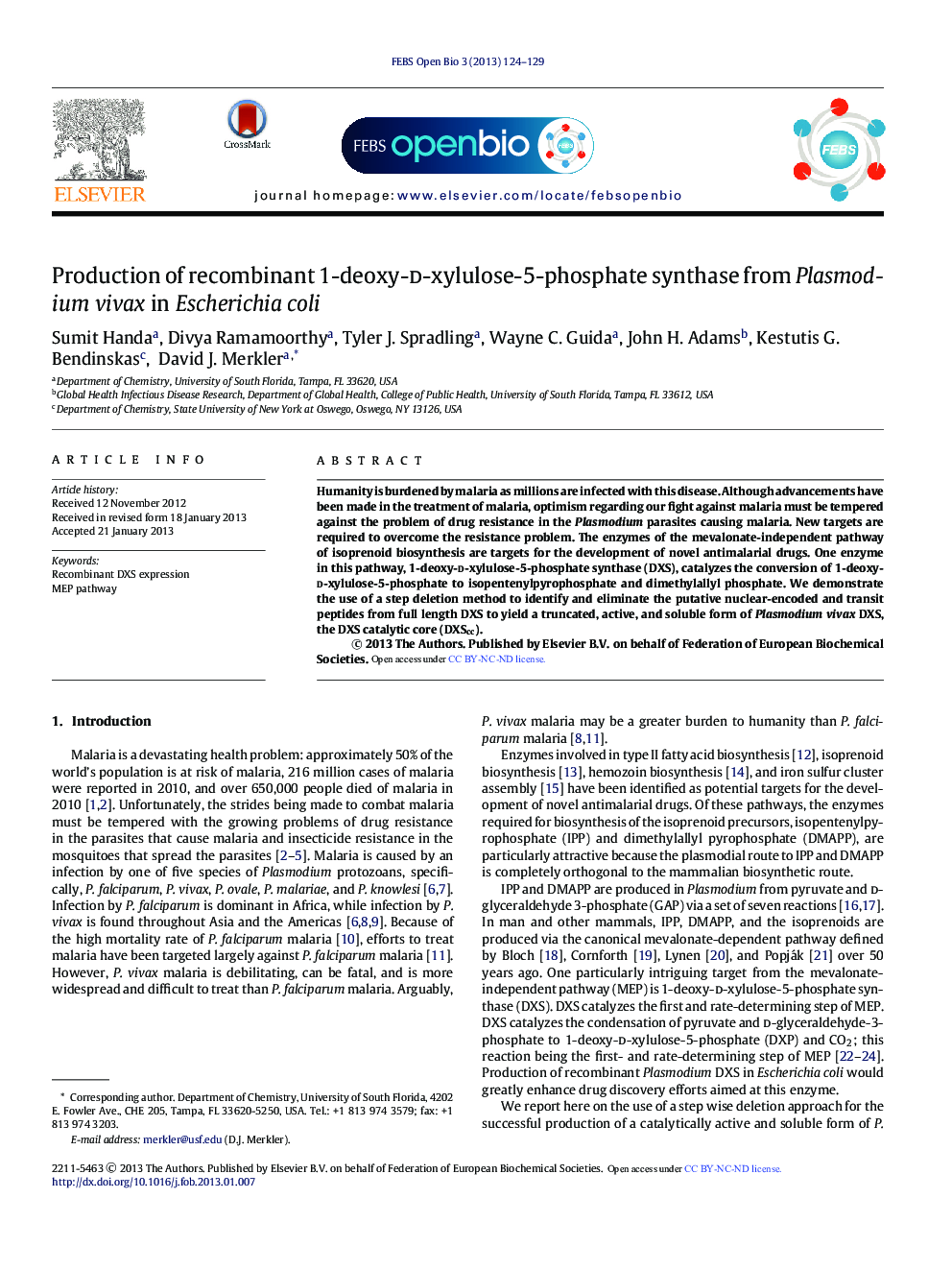| Article ID | Journal | Published Year | Pages | File Type |
|---|---|---|---|---|
| 1981773 | FEBS Open Bio | 2013 | 6 Pages |
Humanity is burdened by malaria as millions are infected with this disease. Although advancements have been made in the treatment of malaria, optimism regarding our fight against malaria must be tempered against the problem of drug resistance in the Plasmodium parasites causing malaria. New targets are required to overcome the resistance problem. The enzymes of the mevalonate-independent pathway of isoprenoid biosynthesis are targets for the development of novel antimalarial drugs. One enzyme in this pathway, 1-deoxy-d-xylulose-5-phosphate synthase (DXS), catalyzes the conversion of 1-deoxy-d-xylulose-5-phosphate to isopentenylpyrophosphate and dimethylallyl phosphate. We demonstrate the use of a step deletion method to identify and eliminate the putative nuclear-encoded and transit peptides from full length DXS to yield a truncated, active, and soluble form of Plasmodium vivax DXS, the DXS catalytic core (DXScc).
Graphical AbstractFigure optionsDownload full-size imageDownload as PowerPoint slideHighlights▸ The catalytic core of P. vivax 1-deoxy-d-xylulose-5-phosphate synthase was expressed in E. coli. ▸ The putative signal peptide spans residues 1 to ∼25 and the putative transit peptide spans residues ∼25 to ∼250. ▸ The stoichiometry of bound Mg(II) is 1.0 Mg(II) atom per P. vivax DXS molecule.
